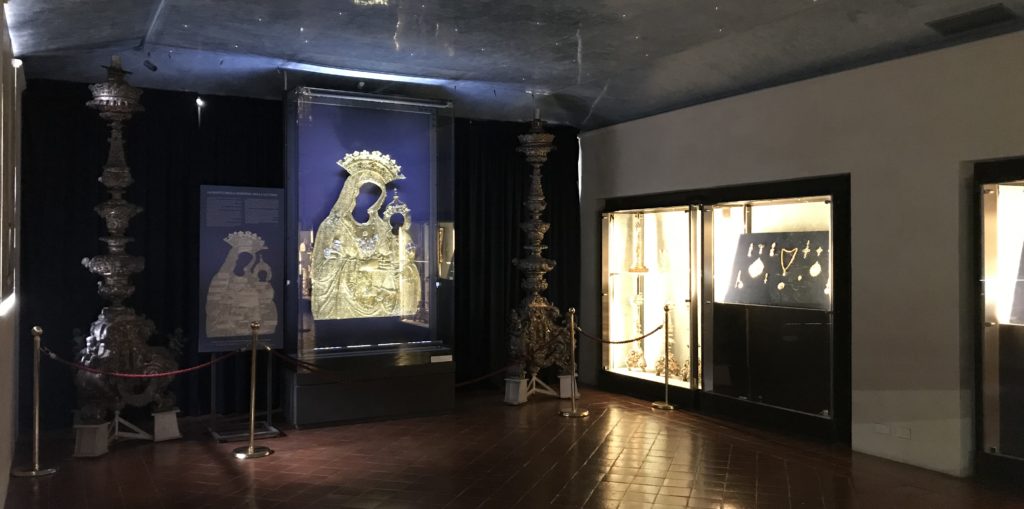The second room is dedicated to the works of art related to the Madonna of the letter. Among them the most important one is the so called Manta d’oro, (Golden Mantle).
The Senate of Messina commissioned this work to Innoncenzo Mangani, a Florentine goldsmith and sculptor, on 29th April 1659. He worked on it from 1661 to 1668. A document dated 7th June 1659 testifies that the Messina silversmith, Giovan Gregorio Juvarra, also worked on it.
It was financed by a tax of 12 tarìs on students graduating from the University, which yielded a total sum of 30,000 scudi.
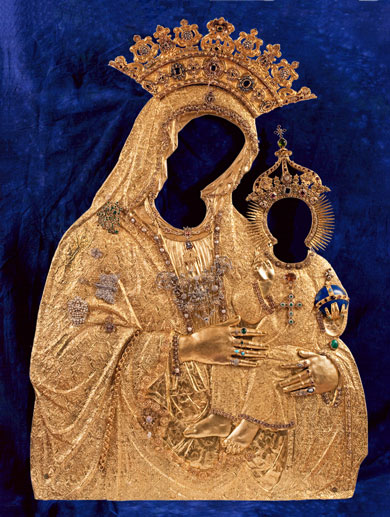
The Mantle was made as a covering, in the Byzantine tradition, for the sacred image of the Madonna of the Letter on the high altar of the Cathedral. The covering was, and still is, used on the Saint’s feast day, 3rd June, every year.
It is made of two superimposed laminæ: below is a base in copper, while the upper one is in gold, finely worked to resemble 16th century damasks and brocades. It is a wonderful piece of craftsmanship; the goldsmith given it a true textile effect, with soft folds in perspective and details of embroidery. Over the centuries, it was adorned with jewels, gemstones and precious enamels given by queens, princes, noblemen and archbishops, as a sign of their devotion and thanks to the Madonna of the Letter. Some of these jewels almost certainly pre-date the work itself and have been adapted to ornament it.
The Virgin’s crown, which has a lily.shaped point, is a real masterpiece of goldsmith’s work, with gemstones, enamels, gold and pearls expertly set into it. The Virgin’s face and the hem of her robes are embellished with gold chains, Sicilian enamels and gemstones. A large collier with the golden fleece and a small pearl charm in the shape of a sheep hangs round the Madonna’s neck; from Canon Deacon D. Alberto Arenaprimo, C. 17
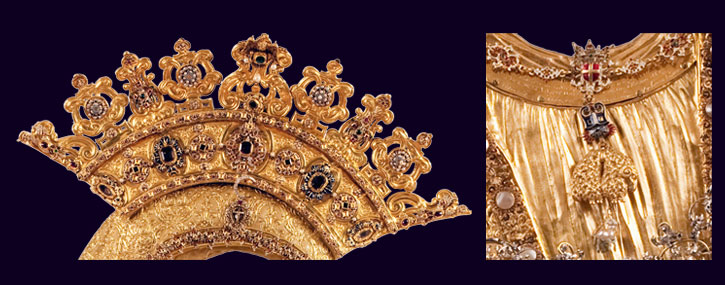
There is a beautiful jewel in the shape of a flowering branch on the Madonna’s left shoulder; it is decorated with 300 emeralds and 100 diamonds and it was a gift from the Vice Queen of Uzeda in 1695. Just below it is a daisy made of diamonds, a gift from Queen Margaret of Savoy, who visited Messina in 1881. Other noteworthy piece is a butterfly-shaped brooch with baguette diamonds, and a little to the left of this, a vase of flowers decorated with enamels and pearls of various sizes which emerge from the vase, C.17.
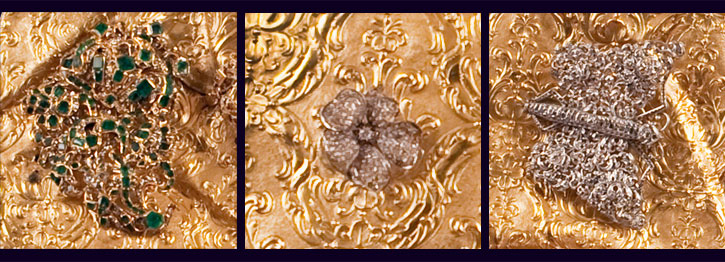
On the Madonna’s breast is a large decoration made up of about 722 diamonds, it was donated by Marquise of Geraci, as a thanksgiving for the healing of her son, in 1714.
On the Child’s breast is a cross decorated with emeralds and diamonds, which belonged to Archbishop Angelo Paino, C. 20.
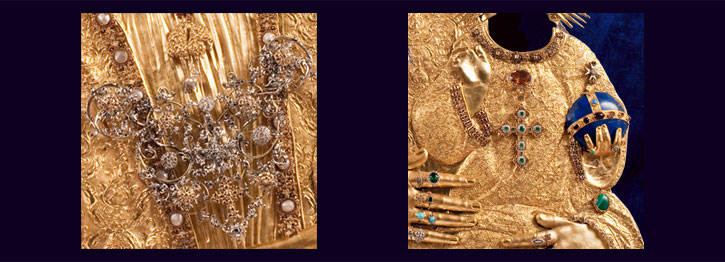
In the folds on the Madonna’s sleeve there is a small medallion with an enamel portrait of the young St. John the Baptist by the Messina goldsmith, Giuseppe Bruno; the upper part has a gold frame decorated with rubies and emeralds, C. 17.
Below the Madonna’s sleeve, there is a golden filigree medallion with an enamelled picture of the Madonna of the Letter, C. 17.
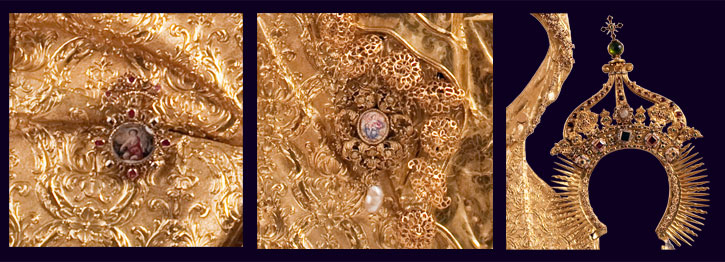
Inside the lateral show cases, 60 jewels donated over the centuries, as thanksgiving to the Virgin Mary are displayed. They were made by goldsmith of Messina.
Among the donations, some crosses belonged to some Knights of the Military Order of Malta. In the middle of the showcase two big medallion depict the Madonna of the Letter; the first one was made by Antonino Donia in 1629. It is made of guilded silver and shows the Madonna holding Baby Jesus in the middle. The second medallion is made of gold and decorated with diamonds. It was created in 1672 for the feast day of the patron Saint and it represents the Virgin Mary with Baby Jesus and a choir of angels.
Particularly precious the broaches in the shape of bunches of flowers decorated with precious stones such as emeralds, diamonds, rubies, turquoise and pearls. They date back to the 17th century.
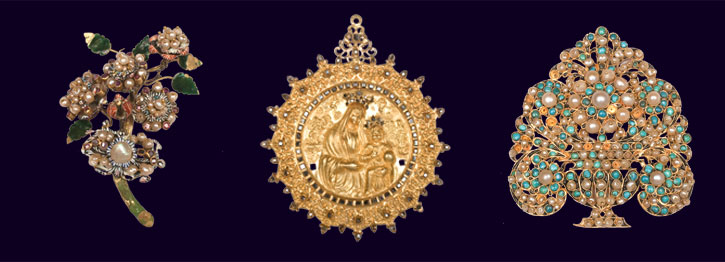
In the same show case, some earrings decorated with diamonds or pearls, C. 20. There is also a very interesting pendent in the shape of a skull, made of rock crystal and decorated with golden filigree and pearls, C. 18.
The newest donation is a a golden necklace decorated with diamonds and two earrings decorated with emeralds and diamonds, both donated in 1980 by the marquise Michelina Carrozza di San Leonardo, noblewoman of the city.
In front of the golden Manta, inside a show case, there are some bishop rings, belonged to several Archbishop of the city. Among them, a ring belonged to Archbishop Fasola, is decorated with an amethyst and several rubies, C. 20.
A modern steel staircase leads to the first floor of the museum with two exhibition rooms.
